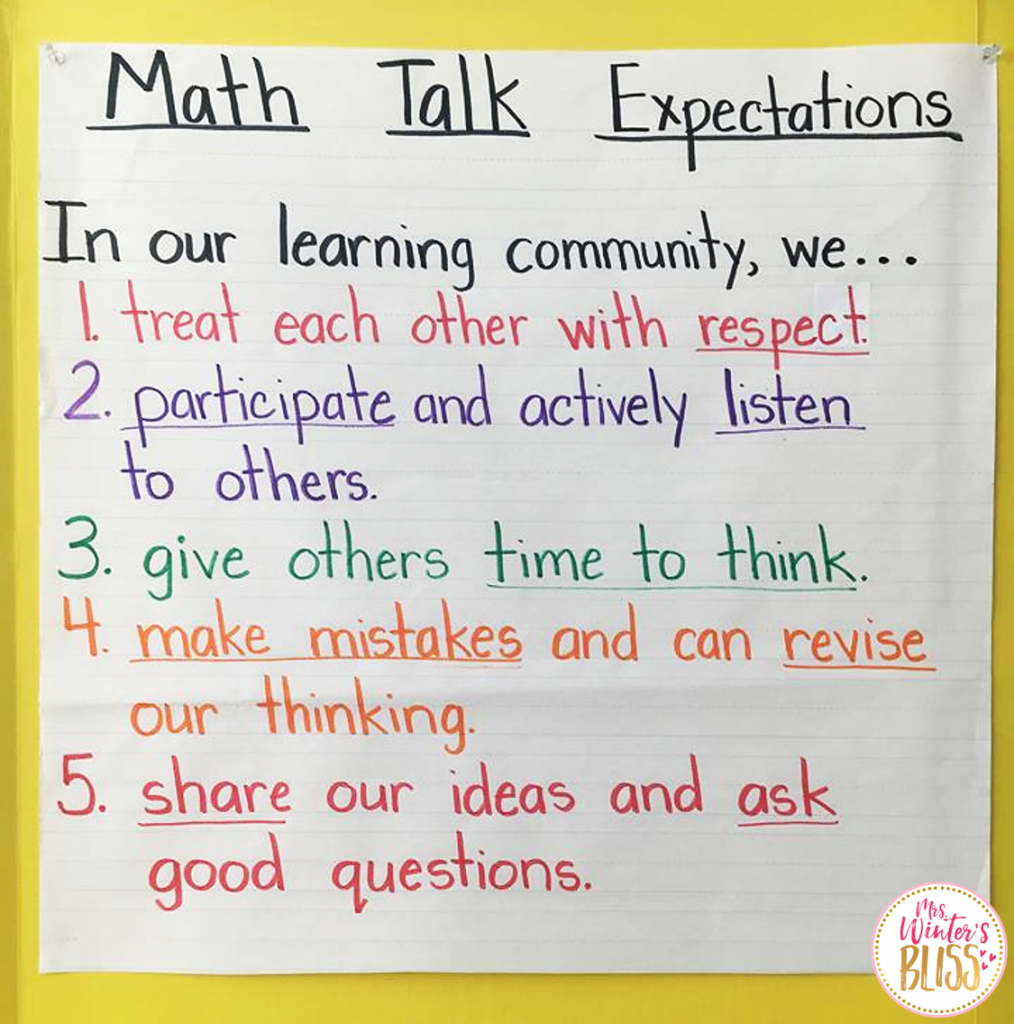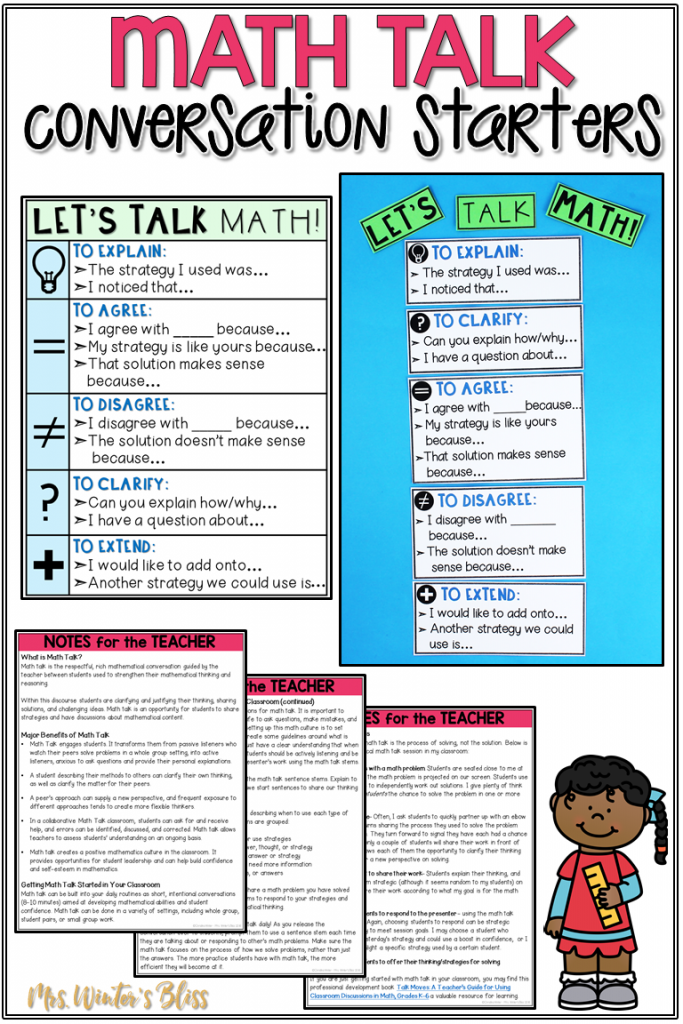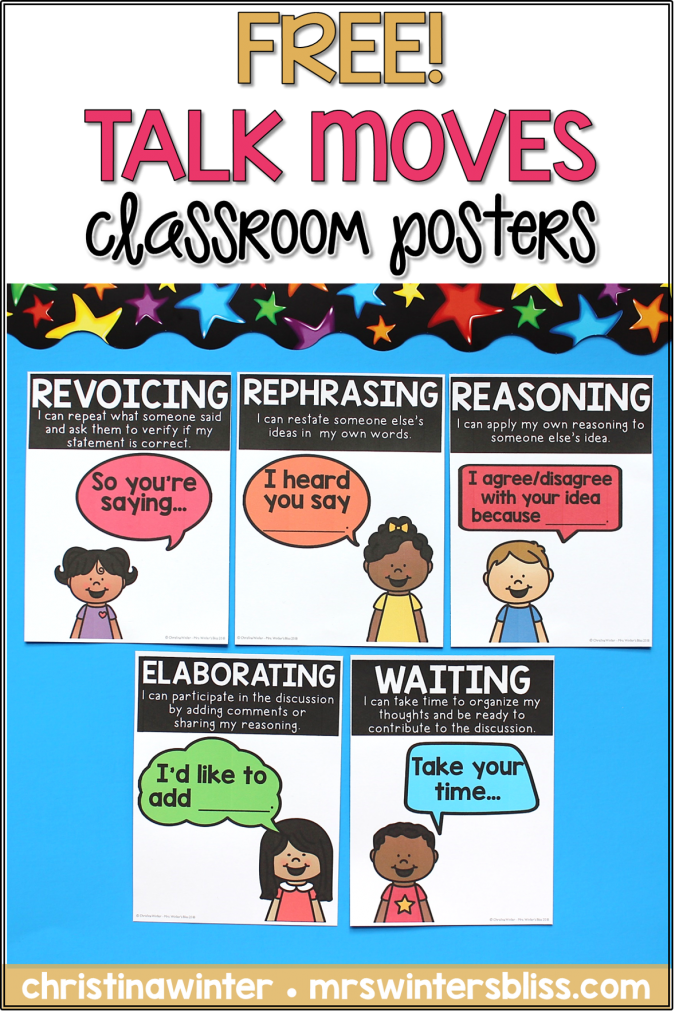
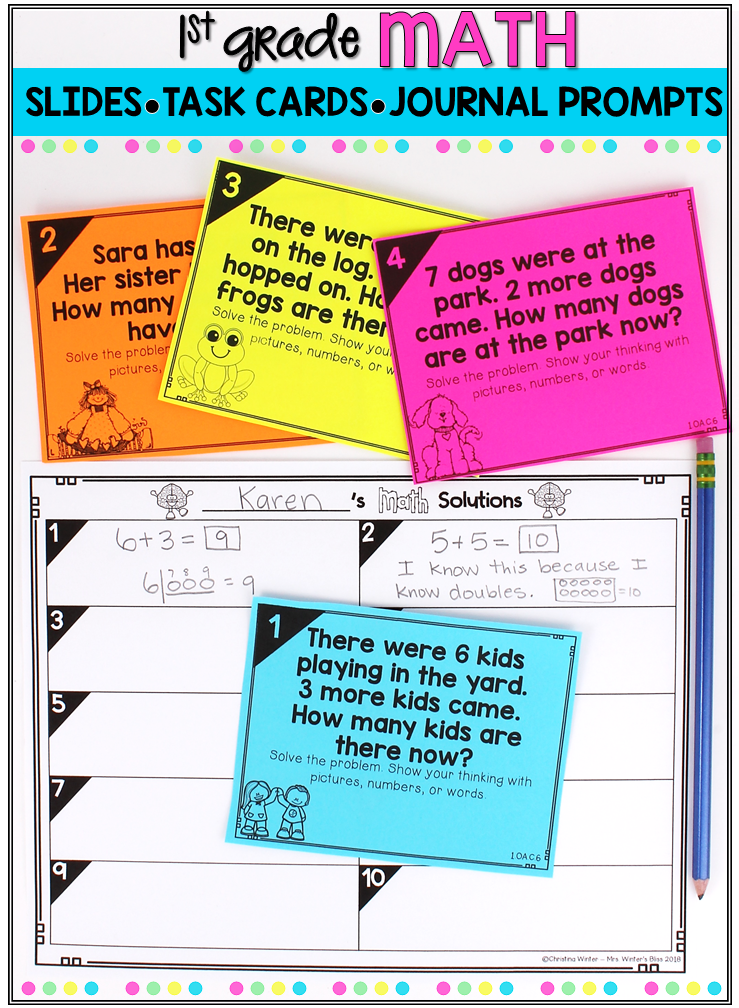
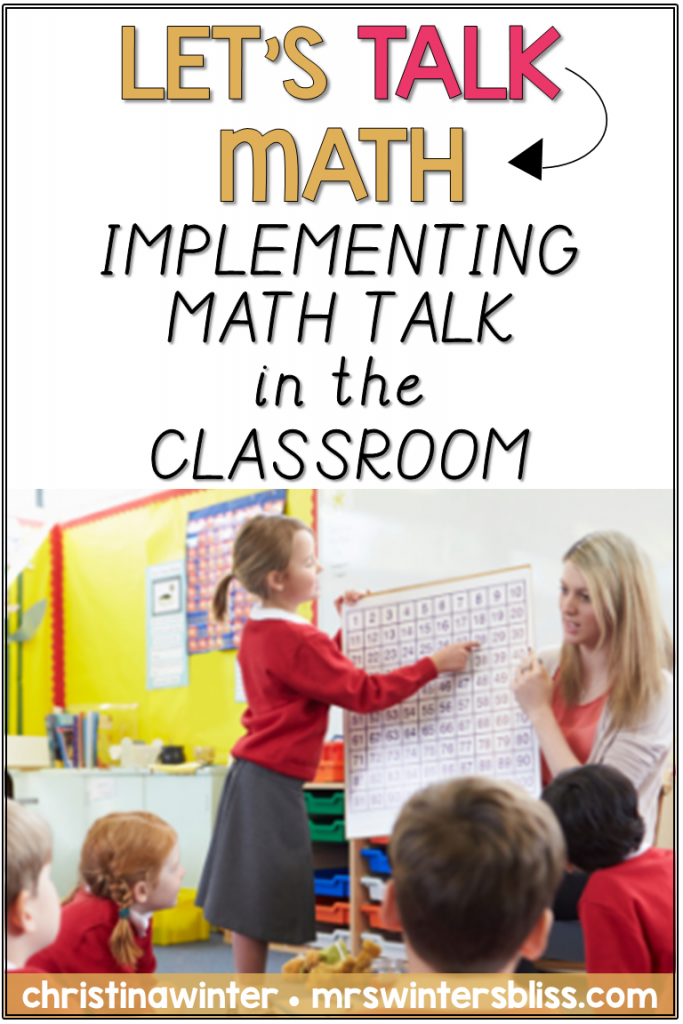
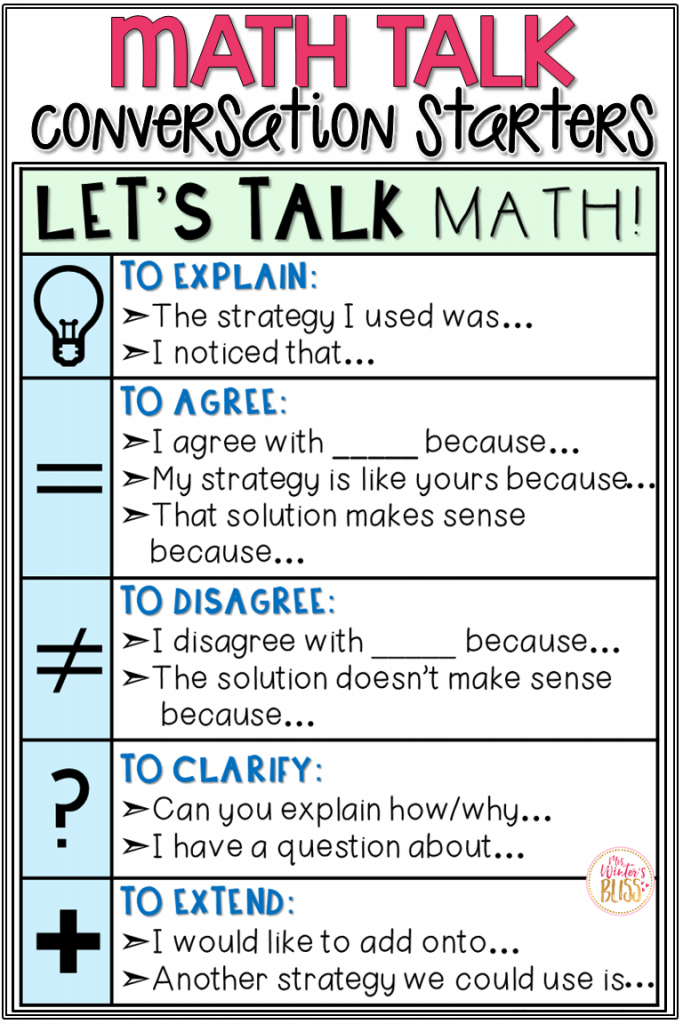
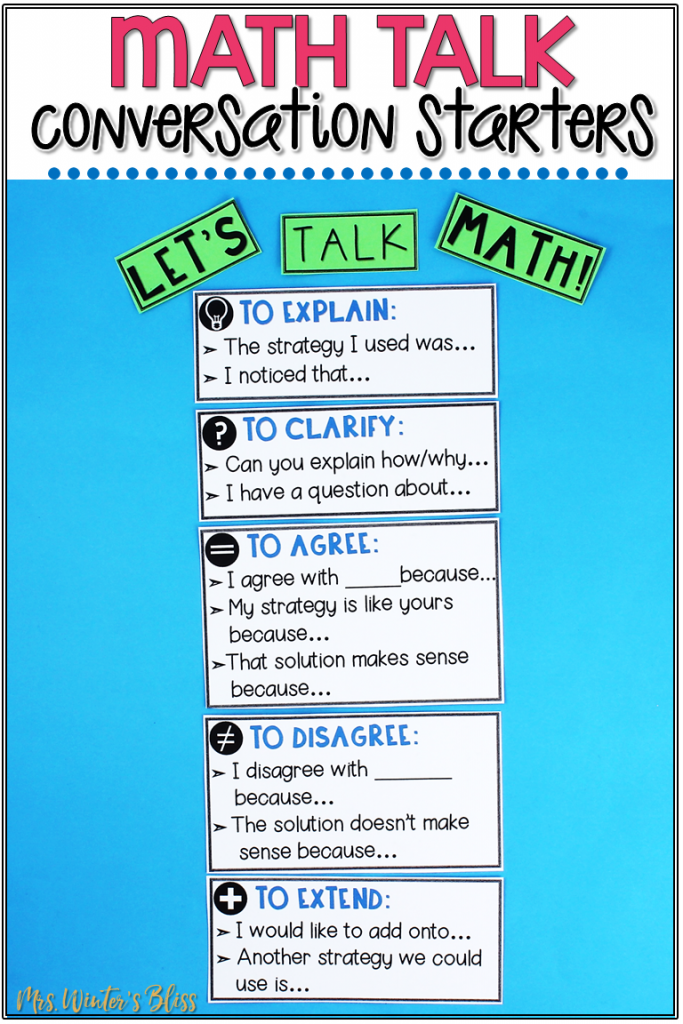
Math Talk discussions are an effective way for students to develop strong communication skills and deepen their understanding of mathematical content. Make sure to download the free math talk posters in the post!
Hello Friend!
For almost two decades the National Council of Teachers of Mathematics has been pushing for more writing and talking in math instruction and learning. While this is an obvious focus in literacy instruction, it seems it has been slower to catch on in math. Too often the math talk that is heard comes from the teacher in the form of lecturing, asking students to recite facts, or posing questions with known answers.
The Common Core standards have brought a greater emphasis on higher order thinking skills to our classrooms. As teachers we have had to make changes to our instructional practice to ensure our students meet these standards. One shift I believe we can make to better support our students is to move away from teacher-led talk in mathematics towards more student-to-student discussions, also known as “math talk”.
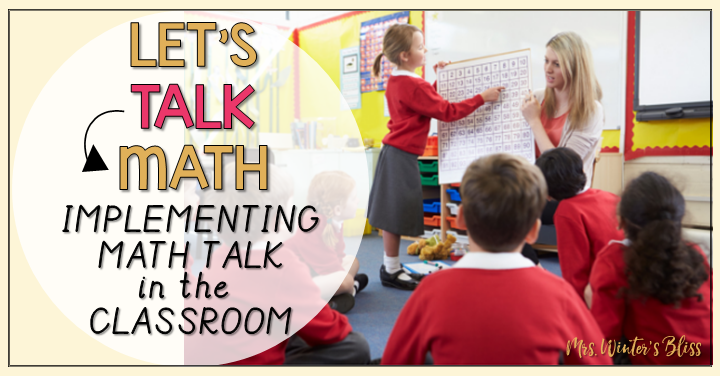
Why? Because math talk engages students! It transforms them from passive to active listeners. It makes them eager to ask questions and provide explanations. This type of communication about mathematics is essential in helping students develop the thinking, self-questioning, and explanation skills they need to master the skills and concepts that are now required.
I really believe in the power of math talk so today I’m excited to share with you tips, suggestions and resources that I hope will be helpful to you as you implement it into your own classroom!
Establishing Safe Environment for Talk
In order for math talk to be successful you must first create a classroom environment where students know all ideas are welcome and respected. They must feel comfortable making and sharing mistakes. I recommend taking time as a whole-class to come up with rules for math talk. Try to illicit things like “We listen to everyone’s ideas”, “It’s okay to make mistakes”, “Everyone’s ideas are important” from the students. If they feel they have had a part in creating the norms, they will be likely to follow them. Here is a sample math talk expectations chart:
Supporting Students in Math Talk
Once you’ve set up expectations as a class, it’s time to introduce your students to the sentence stems that they’ll be expected to use during math talk. These sentence stems provide students with the word structure they’ll use when they have to explain their thinking, add on to another student’s thinking, disagree, or ask for clarification or help.

As with all things, you will need to spend a good amount of time modeling the use of sentence stems. It may be helpful to have another teacher join you to help model it. This way your students can hear what an authentic, back-and-forth discussion using the stems would sound like.
Take time to describe the sentence starters and the use of each type. I like create a bulletin board for reference near our class meeting area and give my students a smaller version to keep in their math notebooks for partner work.

Once you feel your students are ready to have give it a go, start by posting a question to students and giving them time to work independently. Next, have them turn and talk to a partner. This allows them the opportunity to clarify their thinking and offer a peer a new perspective on solving. Sharing with a partner also helps build confidence in their problem solving abilities.

Listen in on their partner-share conversations and be on the lookout for new strategies that you want to highlight for the whole class. After a minute or so, call on a student to share their work. Be intentional in who you choose to share. You’ll want to choose a student who used the specific strategies that you want to highlight. If you can, have the student share their work under a document camera. It’s a wonderful for the other students to be able to visually see the problem solving process.
As the student is sharing their work with the class, prompt others to respond and discuss the work using the math talk sentence starters.
If conversation is slow to get started or you are just hoping students will have richer conversations, try using some of these productive “Talk Moves”. They are a way for you to further support your students and/or guide the discussion in certain directions.

-
- Revoicing – Teacher repeats what students say in another way to help clarify student thinking
-
- Rephrasing – Asking students to restate someone else’s ideas in their own words
-
- Reasoning- Asking a student if they agree/disagree with an idea proposed by another student
-
- Elaborating – Prompting other students to challenge, add on, or elaborate to increase participation and deepen understanding
- Waiting – Use wait time, help students to learn that quiet time is not awkward silence but thinking time
Download these FREE TALK MOVES Posters INSTANTLY here!
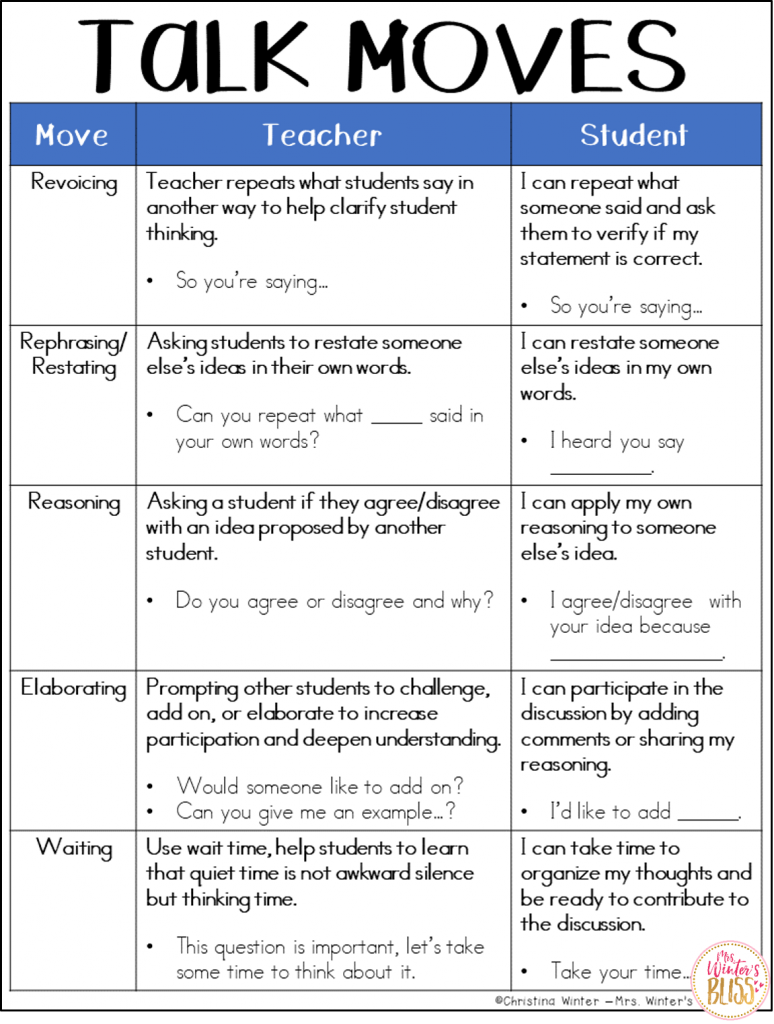
Take a look at this 2 minute video to see how this teacher uses Talk Moves to encourage all students to be active in the math lesson!

What Math Talk Looks Like in My Classroom
It’s often helpful to see or hear what something looks like in action in a real classroom, so now I’ll describe what a sample math talk session would look like in my 1st grade classroom.
Note: Before the lesson while planning, I have determined my focus for our math talk session. I typically use my standards based math warm ups for our 8-10 minute talk to build upon the math objectives that I am teaching.
To start the session, students are seated close to me at the carpet area and the problem is projected on our screen. They have dry erase boards to work out solutions.
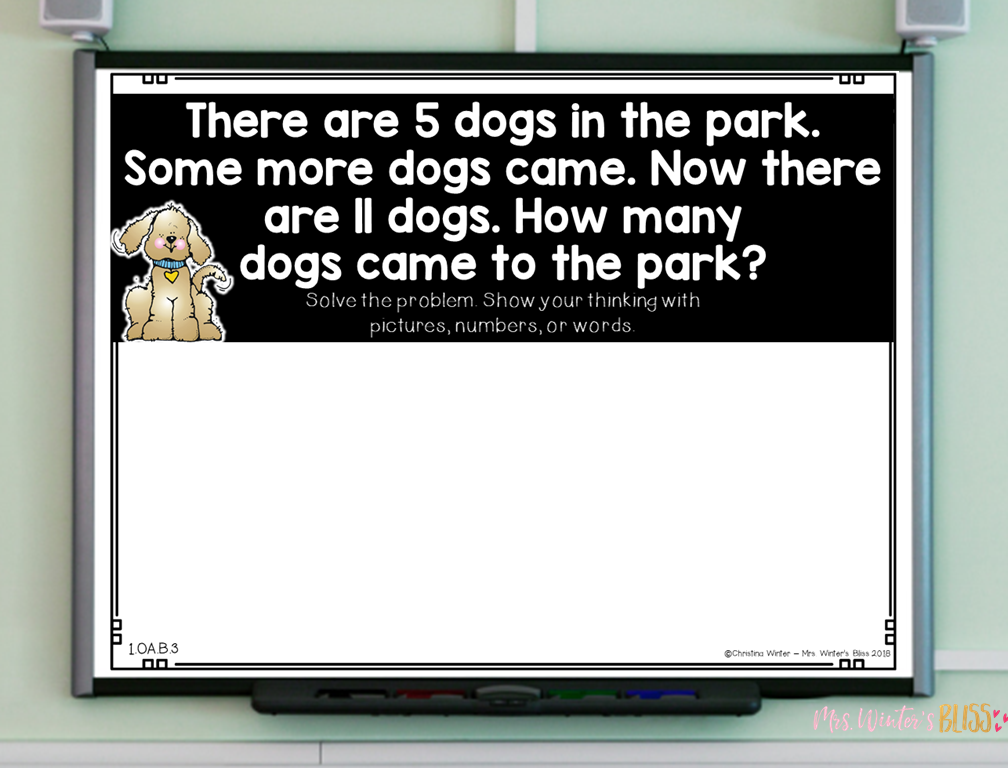
Example Question: There are 5 dogs in the park. Some more dogs came. Now there are 11 dogs. How many dogs came to the park?
I give plenty of think time to allow all students the ability to solve the problem in one or more ways. Students solve independently while I observe and assist students who are having trouble getting started. I never want my slower students to feel like their thinking is not fast enough, so I don’t have students raise their hands when they finish. Instead, they know I expect them to check over their work and consider other strategies they could use to solve the problem.
T- (teacher) – Ok friends, everyone turn and talk to their elbow partners and share your work.
While students share, I scan student work looking for specific strategies that I want to highlight. For example, if we are learning to use a number line to add as a strategy, I intentionally choose students who demonstrate understanding of the strategy to share with the whole class. Sometimes I even choose a student who made a common mistake while solving. The student I choose to share does not need to have the right answer. (Once the norms for math talk have been well-established, mistakes can be highlighted and students typically won’t be bothered by being wrong in front of the class.)
T- Who would like to share? (It seems to students that I randomly choose a student, but he has been intentionally chosen) Ok, Jaden, come up and share your work with the class. Tell us what you were thinking.
S- I think the answer is 6 more dogs because 5 + 6 = 11.
T- Ok Jaden so you got 6 dogs as your answer, because you knew 5 + 6 more was 11? Can you prove your thinking?
S- I used a number line to figure out my answer. My first step was to circle the 5 because there were already 5 dogs. Then I jumped until I got to 11. I had to count up and found I jumped 6 times.

T- Hannah, can you repeat what Jaden just said?
S- He used a number line and started at 5. He jumped 6 times until he got to 11.
T- Jaden does that sound like what you did?
S- Yes, but I did not know I jumped 6 times until I counted.
T- Class, does anyone agree or disagree with Jaden and why? Ok Kyle, what do you think?
S- I agree with Jaden because I also got 6 so I think he is right. I used a different strategy though.
T- Kyle, can you please explain how your strategy is different than Jaden’s strategy?
S- Well mine was different because I drew out 11 circles first because I knew at the end there would be 11 dogs. Then I crossed out 5 of them because 5 were already there. Then I knew 6 were left so that means those are the 6 that came.
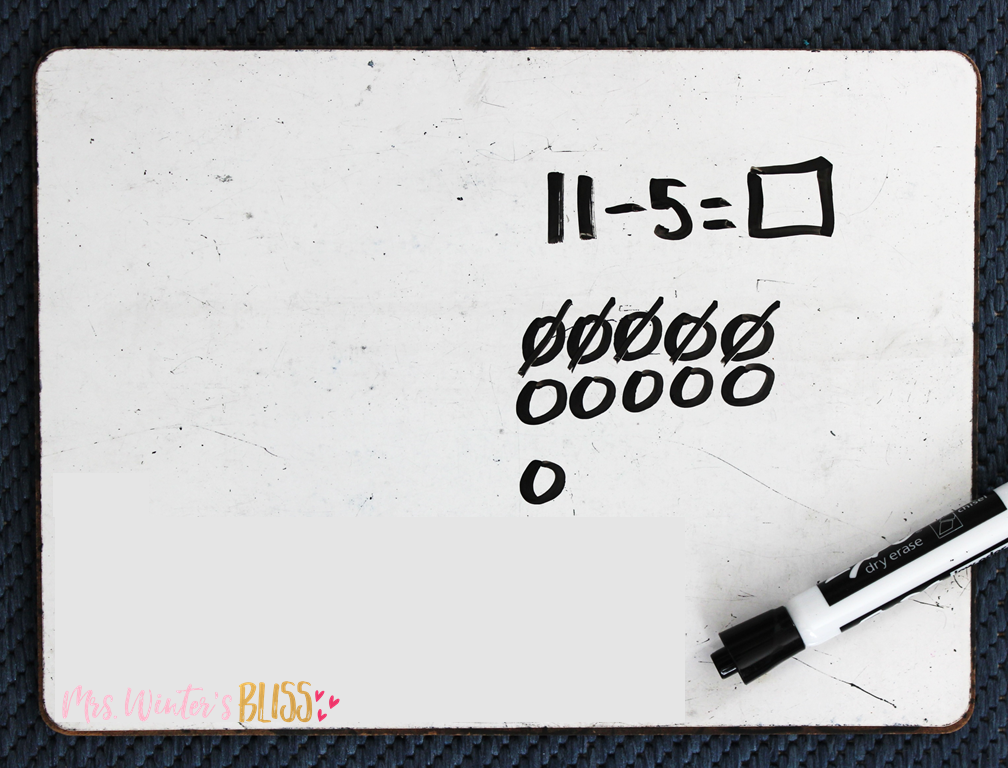
T- So you started with 11 and worked back to 6, and Jaden started with 5 and worked to get to 11 but you both got the same answer. Lily, how do you think these strategies are different?
S- Well they are both right, but they solved it differently. Jaden started with how many dogs were already there and added. Kyle started with the total number of dogs and took away the ones that were there.
T- Yes Lily, that is an important thing you noticed. Jaden added and Kyle subtracted, but they both got the same answer.
T- Class, excellent talk today. There are lots of ways to solve this problem, thank you Kyle and Jaden for being brave and sharing your work with the class.
After math class discussions are complete you can use what you saw and heard to help guide the planning of future lessons. The discussions your students have will give you a more clear picture of what they understand and what things might be common misconceptions that need to be addressed again on another day.
Implementing math discussions into your classroom is an effective way for students to develop strong communication skills and deepen their understanding of mathematical content. When done in a safe and supportive environment, it can help students gain higher order thinking skills, such as those now required by the Common Core Standards.
If you are looking for more resources to use in your classroom you can download these below!
-
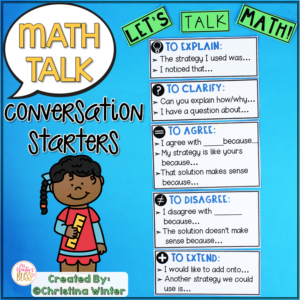 Math Talk Sentence Starters • Math Talk PostersEarn 0 Reward Points
Math Talk Sentence Starters • Math Talk PostersEarn 0 Reward Points
$3.00Rated 5.00 out of 5 based on 1 customer rating
-
Sale Product on sale
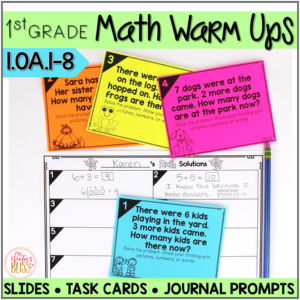 Math Task Cards • Math Warm Ups BUNDLE: Operations & Algebraic ThinkingEarn 0 Reward Points
Math Task Cards • Math Warm Ups BUNDLE: Operations & Algebraic ThinkingEarn 0 Reward Points$14.00Original price was: $14.00.$11.20Current price is: $11.20.
I hope the information and resources I’ve shared today will help you to implement more meaningful math discussions into your day!

